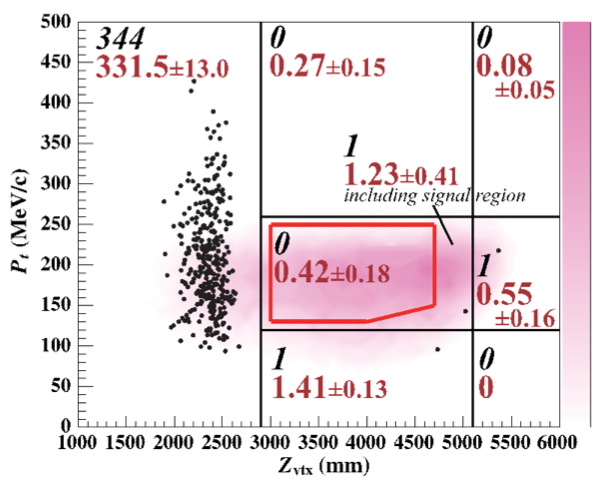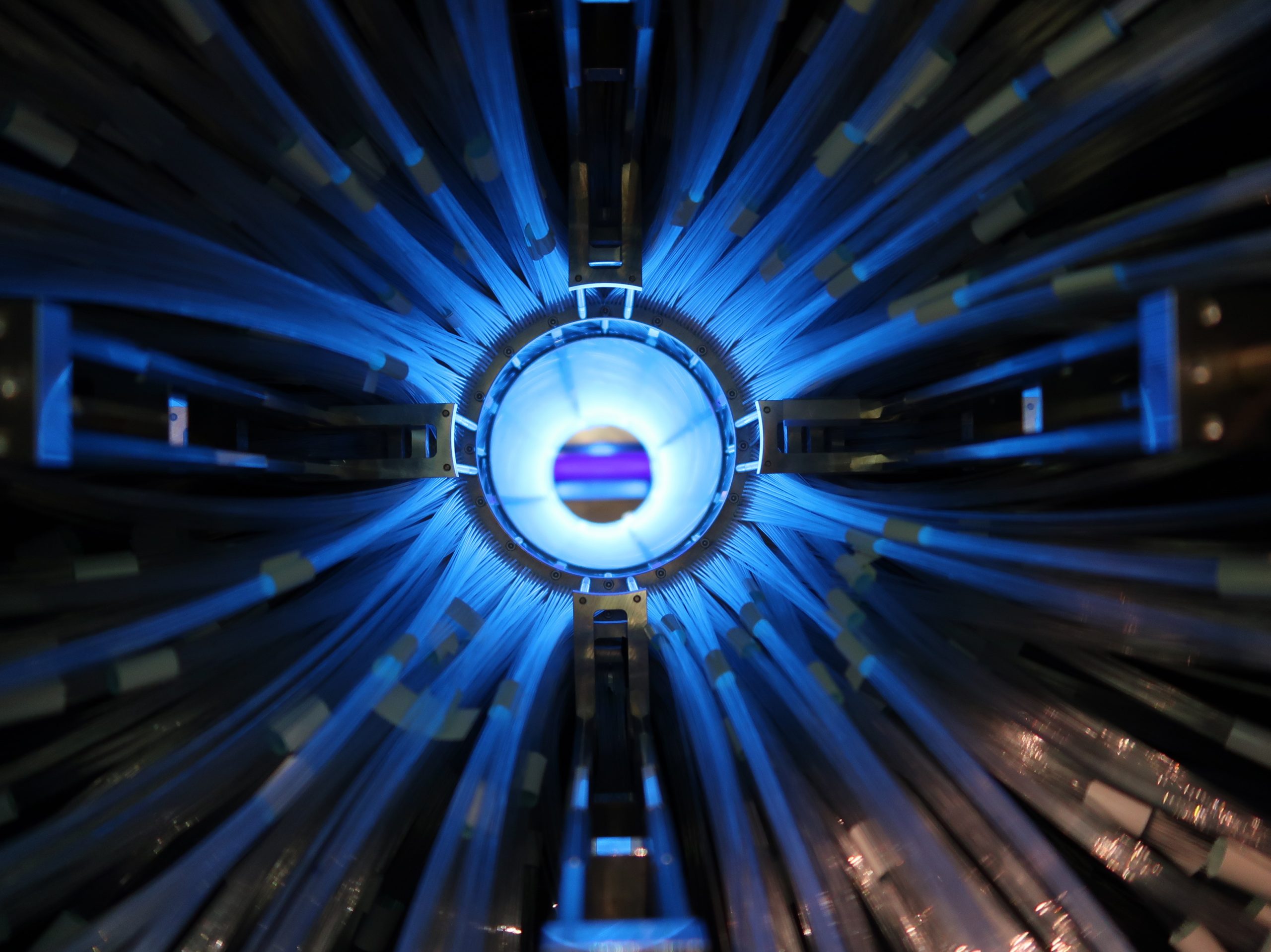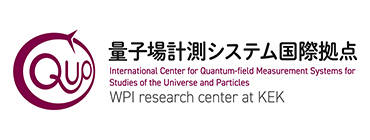- Press Release
KOTO Experiment at J-PARC Hadron Experimental Facility Broke World’s Best Sensitivity on Rare Neutral Kaon Decay by an Order of Magnitude – first step forward elucidation of “matter-antimatter asymmetry” –
March 4th, 2019
-

Final plot representing the results of the KOTO experiment from the analysis of the 2015 data set. The decay vertex position (Zvtx) and the transverse momentum (Pt) of the neutral pion in the horizontal and vertical axes, respectively, were calculated assuming that the vertex was on the beam axis. The black italic (red regular) numbers indicate the numbers of observed (expected background) events for the regions inside the lines. No KL→π0νν candidate events were observed in the signal region surrounded by red lines.
An international collaboration reported the first major results from the experiment KOTO, which is being conducted at the Hadron Experimental Facility of Japan Proton Accelerator Research Complex (J-PARC). The KOTO collaboration set the upper limit of once in three hundred million on the rate of the neutral K-meson (kaon)#1 decay#2,3 into a neutral pi meson and a pair of neutrinos from the analysis of the data set collected in 2015, and improved the world’s best sensitivity by an order of magnitude. The collaboration has begun to elucidate the matter-antimatter asymmetry (CP symmetry breaking) in the universe through kaon decays. As the prospects for future, further improvements on the sensitivity with data collected since 2016 are anticipated. The collaboration upgraded the KOTO detector in the autumn of 2018, and started to take the new data with it in February 2019.
The results have been published in the 18-January-2019 issue of the journal PHYSICAL REVIEW LETTERS.
-

Schematic view of the detector system of the KOTO experiment. The neutral kaon beam enters from the left. The electromagnetic calorimeter (#4) in purple measures two gamma-rays from a neutral pion.
Notable Points
・In the J-PARC experiment, the collaboration achieved the improvement by an order of magnitude in the sensitivity to search for the rare neutral-kaon decay.
・The collaboration has begun to elucidate the matter-antimatter asymmetry (CP symmetry breaking) in the universe through kaon decays.
Footnotes
#1 K-meson (kaon)
A K-meson is any of a group of particles which contains a strange quark (s), which belongs to the second generation of quarks in particle physics. More explicitly speaking, a “charged K-meson(K+)”is the bound state of a strange antiquark and an up quark (u) and a “neutral K-meson(K0)”is the bound state of a strange antiquark and a down quark (d); both the up and down quarks belong to the first generation. There also be the antiparticles of a charged K-meson and a neutral K-meson, K– and K0, as shown in the below figure. There are two neutral K-mesons, K0 and K0, which are a particle and an antiparticle.
-

Four K-mesons (kaons) containing a strange quark.
#2 decay
Heavy particles, produces by high-energy collisions of particles, have a transition to lighter particles over time. This occurs in a very short time, say in one billionth of a second. This phenomenon, due to the interactions of the quarks in the particles, is called “decay” in particle physics. The decay of a particle proceeds via several paths or decay modes. By examining the pattern of decays, quark interactions can be understood.
#3 long-lived neutral kaon
Two neutral kaons K0 and K0 are a particle and an antiparticle. Their superposition makes them into a long-lived neutral kaon(KL) and a short-lived one(KS). Due to the way of superposition, KL has a property of CP odd. The system of a neutral pion and a pair of neutrinos has a property of CP even. Thus, the KL→π0νν decay changes the CP property from odd to even during the transition and breaks the CP symmetry.
#4 electromagnetic calorimeter
An electromagnetic calorimeter is a particle detector to measure the incident position, timing and energy of gamma-rays. The calorimeter of the KOTO experiment was built by stacking two types of 50-centimeter-long undoped Cesium Iodide (CsI) crystals, with 2.5-centimeter-squared and 5-centimeter-squared in their cross sections, inside the cylinder of 2 meter in the diameter (the below figure). The CsI crystals had originally been used in a kaon decay experiment named KTeV at the Fermi National Accelerator Laboratory in the United States in 1990s, and were transferred to Japan through the Japan-U.S. Cooperative Research Program in High Energy Physics. The energy of gamma-rays is transformed to light emission of CsI crystals, the emission is converted to electronic signals and their waveform is recorded by custom-made high speed electronic circuits made by University of Chicago and a data acquisition system built by University of Michigan.
-

Photo of the electromagnetic calorimeter taken in February 2011, when the stacking of the CsI crystals was completed.
Here is the press release.







